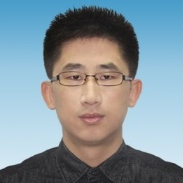Nondestructive Technologies for Complex Engineering Structure Health Monitoring and State Prediction
A special issue of Sensors (ISSN 1424-8220). This special issue belongs to the section "Industrial Sensors".
Deadline for manuscript submissions: closed (20 January 2024) | Viewed by 9536
Special Issue Editors
Interests: nondestructive testing and evaluation; sensors design; signal processing
Special Issues, Collections and Topics in MDPI journals
Interests: intelligent sensing; NDT
Special Issues, Collections and Topics in MDPI journals
Interests: intelligent information processing and process tomography
Special Issue Information
Dear Colleagues,
The health status and state prediction of key engineering structures, which generally have complex geometries, are vital to the safety of important equipment. The ongoing development of nondestructive sensing technologies (including magnetic sensors, optical sensors, and vibrational sensors) and state prediction technologies (such as AI algorithms) help realize the monitoring and evaluation of health structures. With the emergence of new materials (e.g., composite and flexible materials), new manufacturing technologies (e.g., additive manufacturing), and new applications (e.g., deformable structures and multi-scale structures), the research of related technologies has become a hot spot.
This Special Issue seeks to gather the latest developments in nondestructive health monitoring technologies and new processing methods for the state prediction of the complex engineering structure. This Special Issue will cover, but not be limited to, the following areas:
- Quality evaluation of ferromagnetic material additive manufacturing;
- Quality and health evaluation of ferromagnetic alloyed weld;
- AI algorithms in structural health monitoring and state prediction;
- Digital twin technologies;
- Advanced system design and signal processing;
- Robot carried automated NDT system;
- Structural health monitoring of carbon fiber reinforced polymer (CFRP);
- Visualization and interpretation of structural health monitoring data.
Dr. Nan Li
Prof. Dr. Yunze He
Prof. Dr. Qi Wang
Dr. Yujue Wang
Guest Editors
Manuscript Submission Information
Manuscripts should be submitted online at www.mdpi.com by registering and logging in to this website. Once you are registered, click here to go to the submission form. Manuscripts can be submitted until the deadline. All submissions that pass pre-check are peer-reviewed. Accepted papers will be published continuously in the journal (as soon as accepted) and will be listed together on the special issue website. Research articles, review articles as well as short communications are invited. For planned papers, a title and short abstract (about 250 words) can be sent to the Editorial Office for assessment.
Submitted manuscripts should not have been published previously, nor be under consideration for publication elsewhere (except conference proceedings papers). All manuscripts are thoroughly refereed through a single-blind peer-review process. A guide for authors and other relevant information for submission of manuscripts is available on the Instructions for Authors page. Sensors is an international peer-reviewed open access semimonthly journal published by MDPI.
Please visit the Instructions for Authors page before submitting a manuscript. The Article Processing Charge (APC) for publication in this open access journal is 2600 CHF (Swiss Francs). Submitted papers should be well formatted and use good English. Authors may use MDPI's English editing service prior to publication or during author revisions.
Benefits of Publishing in a Special Issue
- Ease of navigation: Grouping papers by topic helps scholars navigate broad scope journals more efficiently.
- Greater discoverability: Special Issues support the reach and impact of scientific research. Articles in Special Issues are more discoverable and cited more frequently.
- Expansion of research network: Special Issues facilitate connections among authors, fostering scientific collaborations.
- External promotion: Articles in Special Issues are often promoted through the journal's social media, increasing their visibility.
- Reprint: MDPI Books provides the opportunity to republish successful Special Issues in book format, both online and in print.
Further information on MDPI's Special Issue policies can be found here.









